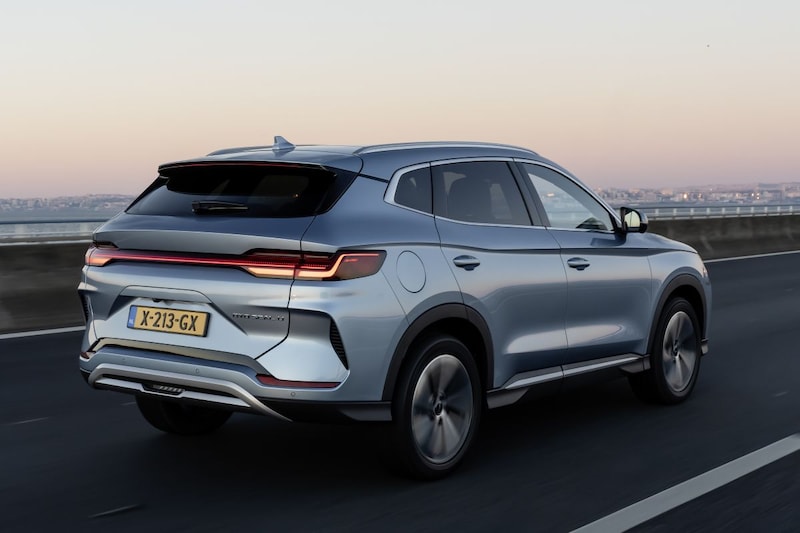
Scheduling test cars is always fun, especially with new players on the market who sometimes really surprise you. Only you would not have thought today’s choice dilemmas possible ten years ago. Which do you want, asks the importer, the RWD with 313 hp or the AWD with 570 hp? For the record: this is not about a one-ton BMW or a Porsche 911, but about an electric mid-range hatchback for lease drivers who do not want a Volkswagen ID, Kia or Tesla. Of course, they immediately know that it is about the BYD Seal.
I’m not going to talk about the car, I still have to drive it, but I will talk about the figures. My last non-electric test car with 313 hp was the BMW 640d Gran Coupé, a car that I enjoyed immensely. The six-cylinder diesel sounded like a squadron of bombers at a distance, buttery smooth but menacing. At every roundabout I saw the traction control light come on, but I hardly noticed that I was driving on the limit, that sloop rode so comfortably. If ever a car suited me, that one. I also thought it was breathtakingly beautiful. Anyway, look at the MRB and the hostile climate. Past.
So now an ordinary electric lease box in the slightly higher middle class has the standard power of a Golf R or a Ferrari 250 GTO. With 570 hp, the Seal AWD saws through the seat legs of an entry-level McLaren, serious Porsches and AMG Mercedes. That primal power may now be squeaky clean, but you may agree with me that it is absurd.
What does that do for safety? It is interesting that the hat question, hated by petrolheads, is asked in so many areas and not on this point. We prohibit texting in the car. We have manufacturers install battery-powered beeping and vibrating safety systems. The Euro NCAP is becoming stricter and stricter. We restrict speeds everywhere. We do nothing about the safety risks of extreme performance that have grown rapidly since the EV.
The most irritating example of hypocrisy is Volvo. That sanctimoniously limits the maximum speed to 180, but allows cars to reach 100 in five seconds. The BYD Seal Excellence makes that 3.8 for just under 50 grand. This means that the representative gearbox that is accessible to a wide audience accelerates to 100 faster than a 911 4S Coupé weighing more than two tons. Who believes that thirty-year-old testosterone bombs in their first Seal will stop at free entrances and exits? I don’t, because I can still remember who I was then.
If you want to tackle that danger, you will have to do something about your capabilities, otherwise all other legal measures against road safety are untruthful – and a waste of money. The car enthusiast in me does not find this a pleasant message. I prefer not to play into the hands of car-hating politics on the politically correct side. But the safety policy regarding the car is as inconsistent as the plague. This also applies to the life-threatening touchscreens in driving cars, which for mysterious reasons still slip through the cracks.
A number of manufacturers are already putting on the brakes of their own accord. The power output of many electric models from Volkswagen, BMW and Mercedes is relatively modest. They seem to have realized that depending on size and weight, between 200 and 300 hp is sufficient. With the 286 hp of the Volkswagen ID7 you are still well endowed, as I experienced in Germany last week. Get started, manufacturers. If some idiot in your cruise missiles causes a disaster on the road, you’ll be in trouble.
So yes, I reserved the simplest BYD Seal. Three hundred and ten horsepower. Twenty years ago it would have kept me awake at night. Now we’re talking about the slip-on. Curious!
– Thanks for information from Autoweek.nl